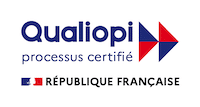Webinar
Digitalisation des entreprises et vente à distance
Animé par Dominique Seguin et Nicolas Boissard,
Directeur Général et Directeur Marketing de Kestio
Pourquoi la digitalisation des entreprises est un sujet clé depuis 2020 ?
Depuis le début de la crise COVID, la démarche commerciale a été obligée d’évoluer à grande vitesse. Le rendez-vous physique n’étant plus possible, beaucoup d’entreprises ont du prendre le virage de la digitalisation.
Même si ce changement est soudain, il présente de nombreux avantages :
- la digitalisation des entreprises permet un gain de temps et de productivité pour, à la fois, les clients et les commerciaux
- le contenant (canal) n’est pas le contenu (conversation), tout ne doit pas changer
- le format et le canal répond mieux aux attentes des clients
- cette digitalisation accélérée va perdurer dans le temps
Comment était le travail des commerciaux avant la digitalisation des entreprises ?
Avant 2010, il n’existe pas vraiment d’alternatives au rendez-vous physique. Le commerciale avait un rôle de transport de l’information, il apportait une information à son client.
Désormais, le client est autonome. Il réalise 70% du parcours d’achat seul. Les clients apprécient de plus en plus la vente à distance.
Les évolutions de l’attente client
Avant, la vente était centrée sur le process : le client exprimait un besoin défini, le commercial identifiait un acteur qui avait un pouvoir décisionnel sur l’acte d’achat, puis une démonstration de la valeur ajoutée était faite, en comparaison à celle des concurrents.
Aujourd’hui, la vente est centrée sur l’apport de la valeur.
Le client est dans un état d’incertitude et le rôle du commercial sera d’identifier un acteur ouvert aux changements et capable d’influencer les décisionnaires.
Enfin, dans la nature de sa conversation avec le client, le commercial aura pour mission de perturber sa manière de penser pour l’amener à challenger son organisation existante.
En pratique, comment la digitalisation des entreprises s’opère ?
Les éléments qui sont amenés à évoluer
Sur un canal physique, les rendez-vous duraient entre 45 et 90 min, ce qui avait une influence sur la rapidité d’avancement. Les commerciaux pouvaient avancer rapidement sur les étapes du cycle de vente.
Sur le canal à distance, l’idéal est de réaliser des échanges de 30 min. Cela implique plusieurs choses :
- un découpage des séquences avec des objectifs précis : qualification, ancrage, co-construction
- le téléphone va favoriser le questionnement et donc l’écoute
- le téléphone est un endroit neutre, il provoque, de fait, un équilibre situationnel plus favorable au commercial.
Les éléments qui ne sont pas amenés à évoluer
Pour de nombreuses choses néanmoins, le travail ne change pas :
- objectif stratégique sur le compte
- objectif tactique sur le compte
- cadrage d’entretien formalisé
- 80% de temps de parole côté client
- toujours fixer la date de la prochaine conversation
Les outils pour réussir
Il faut faire attention à ne pas tomber dans le piège du “on fait pareil, sauf qu’on utilise le téléphone”.
La digitalisation des entreprises implique une évolution des outils et des process.
Plusieurs outils peuvent être mis en place pour faciliter la vente à distance :
- CRM
- Emailing
- Prise de notes
- Visio
- Agenda
- Signature digitalisée
Pour creuser le sujet de la digitalisation des entreprises, nous mettons à votre disposition ce livre blanc : Comment optimiser mon modèle commercial ?




